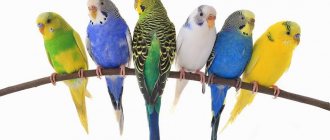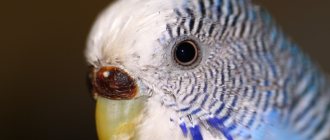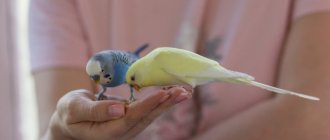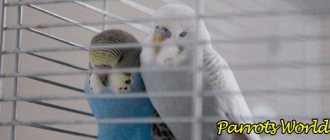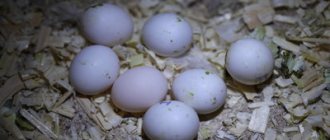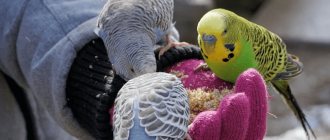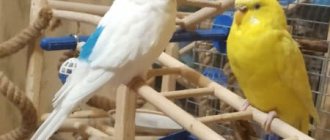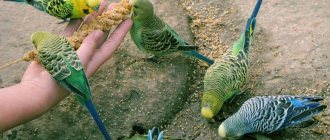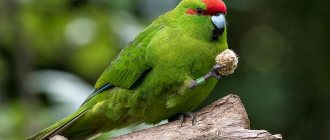Bright and colorful appearance, ability to copy and imitate, high mental abilities - it is not surprising that parrots have gained such popularity. Today there are more than 300 varieties of these wonderful birds; the breeds that are considered the most capable and intelligent will be discussed in this article.
Parrots have been kept in captivity for a very long time; according to the research of historians, the ancient Indians were the first to teach these birds to speak, then the fashion for exotic birds came to Europe. Alexander the Great brought them to their homeland for the first time; from Greece they were brought to Rome and the New World. Because of their ability to reproduce sounds and human speech, birds were considered sacred. There were even specially trained parrots in the Vatican that spoke words in several languages, and an honorary position was even created - parrot keeper.
Currently, many people have such pets, but not everyone has the time and patience to train them to speak. It is easier to teach a chick to talk than an adult. When choosing a parrot, choose one that sits calmly in a cage and listens with interest to its speech; it will be much more problematic to train rushing and wild birds. Training should begin after the adaptation period has ended: choose a melodious name for your pet and repeat it often. Learning will go faster when the bird trusts you, sits on your shoulder, and eats from your hand. Training should be carried out by one person, avoid long words and complex phrases, and do not change intonation often. Focus on a calm tone and 2-3 phrases and speak them regularly with your parrot; at first, do not let your pet watch TV or listen to the radio.
What breeds of parrots are considered the smartest in terms of onomatopoeia and speech learning?
Jaco
Despite their unattractive gray coloration, these birds are distinguished by high mental abilities. Their homeland is West Africa; parrots live mainly in forests. Grays grow up to 35-42 cm. Grays quickly learn spoken language; well-trained pets have the intelligence of a three-year-old child; they imitate male and female voices, the sounds of nature, the roar of animals, and whistle melodies. American scientists have proven that gray parrots not only learn words and phrases, but are also capable of conducting a dialogue. The sex of the Gray does not matter much; both males and females train well.
Floor
A common question that can be heard from those who encounter these birds is how to determine the sex of a budgerigar.
If you decide to have several pets for further breeding, this information will be useful. In addition, it is easier to train a male to speak.
In fact, there are several schemes to define, and they all differ in complexity. The most common way is to observe the waxworms.
Their color and coloration can indicate age and gender. For example, in the fourth month of life, the male’s beak changes color towards blue. White spots are possible.
Amazon
This species includes 25 species that live in South and Central America. They are considered one of the best imitators of speech; they have a higher ability to imitate than the Gray Gray, although they are somewhat inferior in intelligence. They are affectionate to humans, have a friendlier character, and tolerate captivity well. On average, they can learn 80-100 words and also speak in short sentences. Amazon parrots can also perform simple circus tricks, reproduce the tones of musical instruments, whistle melodies, imitate animals and the sounds of nature. These are one of the few parrots that do not hesitate to speak in the presence of a person and love attention to themselves. The best options for keeping in captivity are white-headed, yellow-winged, blue- and red-fronted, Brazilian and Venezuelan Amazons.
Breeding parrots at home
The main mistake of novice breeders is that they buy one pair of birds thinking that this is enough. The fact is that in the wild, budgerigars live in a large group. Several individuals produce offspring much faster.
Conditions also play a critical role. In large enclosures, birds are bred immediately as soon as a pair is formed, while from parrots kept in cages one can expect offspring for years and, which is not uncommon, not at all.
Pair selection
The main condition in this case is mutual sympathy between the female and the male . Alas, it can only be tested experimentally, that is, by placing one individual with another. Therefore, it is more advisable to buy birds not individually, but a pair at once.
How many parrots do you have?
12
It is not difficult to identify the affection of birds. If one parrot fiddles with the feathers of the other, tries to move closer to the partner, or even begins to build a nest, then the pair can be considered successful.
In their natural habitat, budgerigars begin to breed at the age of six months, while in captivity they should be bred no earlier than they are a year old, or even a year and a half old. The female can lay eggs for up to 9 years.
Creating conditions for reproduction
As mentioned above, the ideal conditions for breeding budgerigars is a spacious enclosure. It is enough to install a nesting house in it (25 x 15 x 15 cm) and the female will begin to equip it: fill it with twigs, select sawdust and other elements.
In the conditions of central Russia, the optimal time for laying is summer, autumn . During this period, you can easily get fresh fruits and herbs. It is natural, not industrial vitamins that are so important for the female. If she does not receive enough of them, the chicks will be born with weakened immunity.
Solar activity should also be taken into account. Daylight should last at least 16 hours, and the room temperature should not fall below +20°C. The possibility of drafts should be completely eliminated. During the laying period, the female is especially susceptible to colds.
Pairing
Until there is a nesting house in the enclosure or cage, the female will not allow the male to approach her for mating.
During this period, the attention of the owner and household members to the birds should be limited : stop playing, training and reduce any contact to a minimum.
To speed up the process a little, it would be a good idea to remove all unnecessary accessories from the cage and dismantle special play areas. Eliminating distractions will have a positive effect on the frequency and quality of mating.
The appearance of chicks
A few days before laying begins, the female plucks feathers along the entire perimeter of the cloaca. She practically never leaves the nesting house: only to quench her hunger and thirst. When there are few eggs - 4-6 pieces, then only the female is involved in incubation. But if the number increases to 8 or more, then the male is involved in the procedure.
Did your parrots have chicks?
Yes No
In about three weeks the first young should appear. The appearance of the chicks resembles more reptiles than birds: an elongated neck, a hypertrophied head and a complete absence of feathers.
The latter begin to appear after 10 days and only the month-old young animals become bird-like. If, after 20-25 days after the appearance of the last chick, there are eggs left in the nesting house, then they must be disposed of.
As soon as the female leaves the nest to satisfy her hunger, the house needs to be cleaned (about once a week). You should change the bedding with sawdust and treat the surface with chamomile tincture. The procedure must be carried out exclusively with medical gloves, otherwise the female, sensing a foreign smell, will not want to return to the house. After about a month, the chicks will try to leave the nest and live separately.
Cockatoo
Cheerful and cheerful parrots, whose natural habitat is Indonesia, the Philippine Islands, Australia, and New Guinea. The size of the birds is impressive: from 30 to 70 cm, there are also many color variations. They have real artistic talent: they love to fluff up their crest, dance, and their powerful beak becomes a real tool with which parrots gnaw through bars and open locks. As for speech abilities, cockatoos are somewhat inferior to their two brothers described above, but in imitation they have no equal. Pink cockatoos and Inca cockatoos are the best to train. Cockatoos remember several dozen words and simple phrases, but they reproduce the most bizarre sounds and melodies.
Macaw
It is considered one of the largest and at the same time gifted parrots, although it does not remember many words - about 20, but pronounces them meaningfully and always to the point. However, there are individuals who quite successfully operate with 100 words and sentences. This order includes 15 species, their life expectancy is 80-100 years. If the owner treats the pet well, he will repay him with love, if the macaw is offended, he becomes aggressive. The macaw's voice is shrill and cutting to the ear, so not everyone will choose it as a poultry. The most popular are blue-yellow, green-winged, hyacinth and red macaws - they perfectly imitate sounds (a dog barking, a door creaking, etc.) and voices, and whistle melodies.
Budgerigar
An interesting feature of this species is that it is mostly males who talk, while females prefer to remain silent. Budgerigars cannot pronounce words clearly and loudly, they still resemble chirping, but the volume of their vocabulary is impressive - up to 150 words. Parrots remember the intonations of the human voice well, are able to imitate them, whistle melodies, and imitate the singing of birds. Sometimes female wavy birds enrich their vocabulary with several dozen words, but males are still preferable for training.
Corella
Bright and sociable parrots with a funny crest and gray-white plumage. If you compare a cockatiel with a budgie, the latter talk more, but cockatiels pronounce words more clearly. Representatives of this species have the ability to speak; they can learn to repeat words and sentences, imitate sounds, and whistle melodies. The voice of cockatiels is quite shrill and sharp; these parrots distort human speech and pronounce words with a characteristic chirp. Such pets cannot conduct a dialogue; they give out their entire supply, regardless of the situation.
Cell selection
This type of bird family loves space. In addition to the cage itself, which must be of sufficient size, it is important to let your feathered friend fly.
Of course, the more parrots you get, the larger their house should be. Plain, unpainted metal cages work great.
Don't forget about the perches - the optimal arrangement is one above the other, which will make it look like a two-level cage. Photos of budgies and pet cages will help you make your choice.
Rosella
A fairly popular variety of parrots, they easily adapt to new conditions and are undemanding in their maintenance. Their speaking abilities are weak; pets remember no more than 10 words, most often limiting themselves to 2-5 words. Rosellas have beautiful singing, they are able to imitate the voices of other birds, the sounds of nature, most often they remember their name or the name of the owner and pronounce it. Rosellas are quite aggressive towards other birds, so it is better to keep them only with fellow birds. The most popular are pale-headed, chick-cheeked, variegated, black-headed, and yellow-bellied rosellas.
By the way, the smartest parrot, listed in the Guinness Book of Records, was a gray parrot. His name was Alex and he lived for 31 years. Jaco knew more than 400 words in different languages, knew how to correctly construct sentences, and had the ability to sing and musical memory. Alex was trained by Irene Pepperberg from Arizona. Alex distinguished geometric shapes, colors, the number of objects, and could read syllables. His level of intelligence corresponded to the development of a five-year-old child.
So, dear owners of smart and clever feathered creatures, be patient and attentive, and your pets will surprise you more than once!
Description of parrots and photos
The body of sexually mature individuals reaches a length of 19-22 cm, excluding the tail. The latter grows up to 10-14 cm. The weight of a budgerigar fluctuates around 40-45 grams. The dominant colors of plumage depend on the specific subspecies of the bird.
The beak is relatively small, considering the size of the animal: it is covered with a horny layer, where a pair of holes can be seen on the upper part. The tongue is short, oval and also has a layer of bone tissue. Unlike other members of the family, budgerigars have a movable beak: the upper jaw is attached to tendons, and not through bone joints.
The bird's feet have a gray or pink tint and consist of 4 fingers: one pair faces forward and the other back. Thanks to this structure, the parrot climbs branches equally well and moves along a horizontal surface. Moreover, with the help of its paws the animal grabs food or lifts some light objects.
You can see what a budgie looks like in the photo:
